
The best Bitcoin wallet is more than a simple storage tool; it is a gateway to managing and securing your digital holdings effectively. Acting as a bridge between users and decentralized assets, it determines how efficiently you send, receive, and monitor transactions. A well-chosen solution guarantees accessibility, simplifies tasks, and enhances safety. Conversely, poor decisions can expose funds to cyber risks, create frustrating user experiences, or even lead to irreversible loss.
Understanding the Role of Digital Storage Solutions
A dependable digital tool not only holds credentials but also streamlines management. It facilitates secure access, transaction oversight, balance monitoring — all while protecting assets from potential risks.
- Private key protection: these tools safeguard private keys, the unique access codes necessary for managing funds. Without centralized recovery methods, losing these credentials can mean losing access permanently.
- Transaction management: sending along with receiving funds requires precision. Good tools streamline this process with clear validation steps as well as reliable performance.
- Real-time monitoring: they provide up-to-date information about holdings, transaction history, confirmations. Reliable systems ensure accurate tracking without unnecessary delays.
Choosing a weak option risks exposing private keys, complicates management, or reduces visibility into key activities, leaving assets vulnerable.
Why Your Choice Matters
Selecting the right solution directly impacts protection, accessibility, overall ease of use. Aligning your choice with personal goals as well as habits ensures an efficient experience.
1. Protection from Cyber Risks
Digital holdings are frequent targets of malicious attacks. Poorly designed systems or outdated options heighten exposure to:
- Hacking attempts: cybercriminals exploit weak encryption or unpatched vulnerabilities to compromise access. A robust solution integrates multiple safeguards like encryption layers along with multi-factor authentication to reduce these risks.
- Phishing scams: fraudsters create deceptive platforms, emails, or apps to trick users into revealing access codes. Reliable solutions help users validate interactions while minimizing risks.
- Accidental loss: solutions lacking backup or recovery mechanisms leave users unprepared for unexpected errors, such as system failures.
A well-chosen option combines protective measures like encryption, PIN codes, offline tools to minimize risk.
2. Balance Between Protection and Accessibility
Every user’s needs differ based on their activity level. Selecting an option that aligns with these goals ensures maximum convenience without compromising protection.
- For frequent users: those making daily transfers benefit from software-based tools. Mobile along with desktop options offer speed as well as ease of access, integrating seamlessly with other services.
- For long-term storage: if safeguarding assets for extended periods, physical hardware devices or offline alternatives remain unmatched. These tools keep access keys disconnected from networks, eliminating online risks.
Balancing efficiency with strong protection allows users to enjoy convenience while securing long-term financial interests.
Features That Define the Best Options
A good choice delivers usability, adaptability, unmatched reliability. Evaluating essential features helps identify tools that simplify management as well as enhance protection.
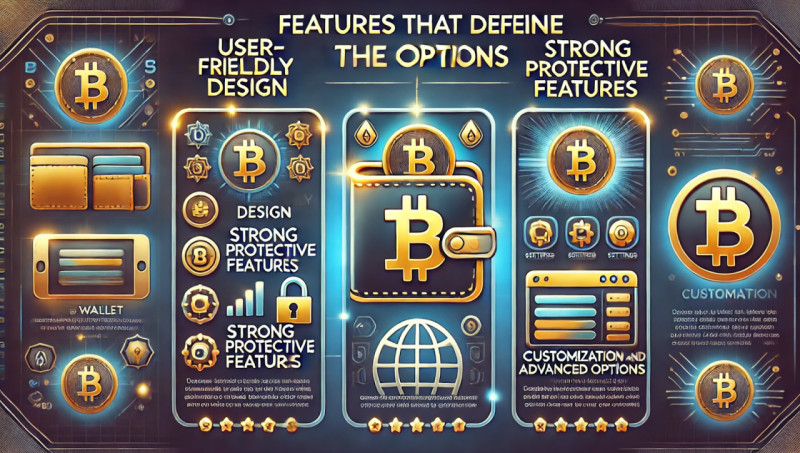
1. User-Friendly Design
Overly complex setups hinder usability. Reliable tools prioritize simplicity, accessibility with:
- Intuitive dashboards: easy-to-navigate interfaces help users manage balances, view histories, complete transactions without confusion.
- Multi-device compatibility: tools that work across mobile, desktop, physical platforms offer flexible access wherever needed.
- Step-by-step guidance: clear instructions streamline onboarding, helping new users avoid errors while choosing the best bitcoin wallet.
2. Strong Protective Features
Safeguarding digital holdings is critical. Look for tools offering:
- Data encryption: protects sensitive credentials from unauthorized access.
- PIN and multi-factor authentication: extra layers that block unwanted attempts to gain access.
- Offline storage: physical devices or systems disconnected from networks reduce exposure to cyber risks.
3. Customization and Advanced Options
The ability to tailor tools ensures greater control. Choose options that:
- Support diverse digital holdings, simplifying multi-asset management.
- Offer transaction fee customization, letting users prioritize speed or cost-efficiency.
- Enhance privacy by minimizing traceable activity or securing sensitive details.
Risks of Making a Poor Choice
Choosing the wrong solution can cause significant setbacks:
- Loss of holdings: weak systems make credentials vulnerable to theft, errors, or software malfunctions.
- Missed opportunities: slow or outdated tools delay transactions, leading to missed market opportunities.
- Frustration: complicated setups, confusing dashboards, or unreliable platforms waste time as well as create stress.
The Value of Thoughtful Decision-Making
Selecting a secure cryptocurrency wallet provides a seamless balance of safety, control, usability. When managed thoughtfully, it guarantees:
- Peace of mind: knowing funds remain well-protected allows users to focus on strategy rather than worry about threats.
- Efficiency: simplified processes for managing transactions, balances, or backups save valuable time.
- Autonomy: retaining full control of assets ensures independence from intermediaries or centralized services.
Whether securing assets for years or managing day-to-day transfers, prioritizing the right features enhances protection while ensuring a hassle-free experience. A well-informed choice positions users to navigate the evolving digital landscape confidently and securely.
Understanding Bitcoin Wallets
A crypto wallet serves as a vital tool for managing digital holdings as well as keeping private keys safe. While it doesn’t hold the currency directly, it safeguards the keys that grant access to funds recorded on the blockchain. These keys act as digital signatures, confirming ownership, enabling transactions. Selecting the proper storage solution simplifies management, ensures accessibility, minimizes risks. Whether you’re making regular transfers or preserving assets for the long term, knowing the available options helps make better decisions.
What Is a Bitcoin Wallet?
This tool acts like a digital keychain, containing both public and private keys. Private keys must remain confidential, as they unlock access to your holdings. Public keys, often displayed as addresses, allow others to send funds without compromising ownership.
Primary roles include:
- Key management: storing private keys safely to preserve ownership.
- Transaction facilitation: simplifying the sending as well as receiving of funds.
- Monitoring balances: providing real-time insights into transaction activity along with holdings.
Choosing a solution depends on factors such as convenience, safety, transaction frequency.
Types of Bitcoin Wallets
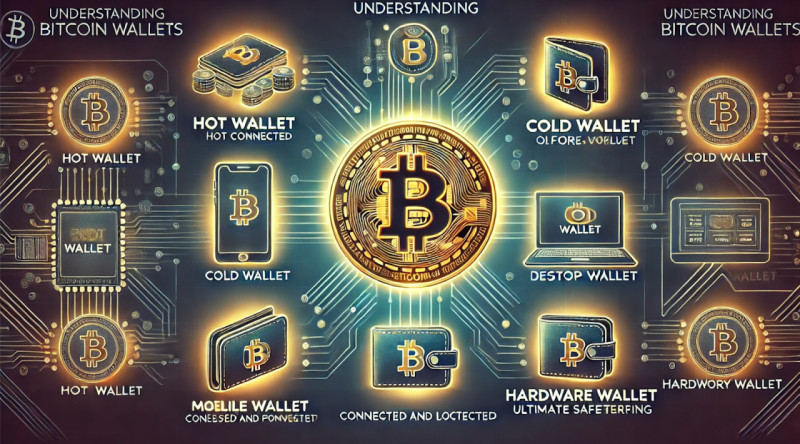
Several methods exist for managing private keys, each offering distinct advantages. The choice comes down to balancing usability, access speed, protection levels.
1. Hot Wallets: Connected and Convenient
Hot wallets stay linked to the internet, making them ideal for frequent transactions. These tools include browser-based platforms, mobile apps, online services.
Benefits:
- Quick, seamless access for transfers.
- Simple interfaces suitable for newcomers.
- Best bitcoin wallet suited for small, daily transactions or active trading.
Risks:
- Internet connectivity exposes keys to hacking as well as malware attacks.
- Third-party platforms holding keys can be compromised.
Hot wallets work well for users managing small amounts regularly but require added precautions to avoid breaches.
2. Cold Wallets: Offline and Highly Protected
Cold storage solutions keep private keys completely offline, isolating them from cyber threats.
Advantages:
- Protection against phishing attacks, malware, online hacks.
- Ideal for safeguarding large sums or long-term storage.
Challenges:
- Less convenient for immediate transfers.
- Vulnerable to physical damage if backups aren’t managed properly.
Options like hardware devices or paper-based methods are preferred by long-term holders seeking unmatched protection.
3. Mobile Wallets: Flexible and Portable
Mobile-based solutions allow users to manage holdings directly from smartphones, offering fast transfers along with ease of use.
Key Features:
- Designed for portability with user-friendly apps.
- Supports quick payments through QR codes, NFC.
Limitations:
- Mobile devices are prone to theft, software vulnerabilities, loss.
- Dependence on app updates as well as device performance.
Mobile wallets suit individuals needing regular, on-the-go access while balancing convenience with efficiency.
4. Desktop Wallets: Controlled and Localized
Desktop-based tools install directly on computers, providing more control over private keys while reducing reliance on third parties.
Strengths:
- Private keys stay on the user’s computer rather than external servers.
- Balances usability along with control.
Weaknesses:
- Exposed to malware, keyloggers, or hardware malfunctions.
- Regular backups are necessary to prevent data loss.
Desktop wallets cater to individuals looking for greater autonomy while managing funds locally.
5. Hardware Wallets: Ultimate Safeguarding
Often recognized as the safest crypto storage, hardware tools store private keys on physical devices, completely disconnected from the internet.
Benefits:
- Immune to hacking attempts as keys remain offline.
- Added layers like PIN codes as well as encrypted backups ensure robust protection.
Drawbacks:
- Pricier compared to other options.
- Requires careful managing to avoid physical damage or misplacement.
Hardware solutions are ideal for serious investors holding significant amounts of digital assets.
6. Paper Wallets: Simple Yet Fragile
A paper wallet involves printing private and public keys, offering a completely offline method of storage.
Advantages:
- Free to generate without relying on hardware or software.
- Offline nature eliminates exposure to digital threats.
Risks:
- Prone to damage from fire, water, or physical wear.
- Requires technical know-how to manage safely.
While cost-effective, paper wallets require meticulous management to ensure keys remain intact as well as accessible.
Making an Informed Choice
Knowing these options allows users to align their selection with specific requirements. Frequent traders may lean toward mobile or online tools for speed as well as convenience, while investors preserving long-term holdings often prefer hardware devices or offline methods. Balancing usability, access frequency, protection levels ensures efficient management without unnecessary risks. The best cryptocurrency storage aligns with personal habits along with goals, providing peace of mind as well as control over digital holdings.
Key Features to Look for in the Best Crypto Storage
Choosing an effective storage solution involves balancing protection, functionality, user experience. Whether you’re a newcomer or experienced in managing digital assets, focusing on essential features helps pinpoint the best bitcoin wallet suited to specific needs. Below are critical factors that define reliable storage systems for safeguarding as well as accessing funds.
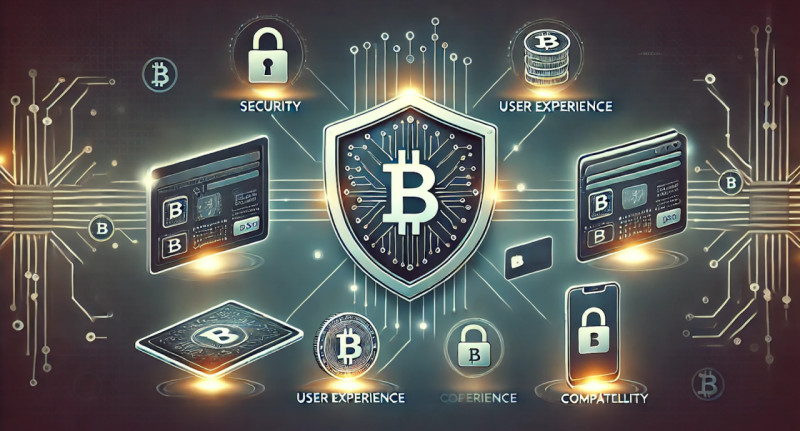
1. Security
Protection stands as the cornerstone of any storage solution. Without strong defense mechanisms, holdings risk exposure to unauthorized access, malware, or cyber theft.
Core features for maximum protection:
- Encryption: robust encryption scrambles private keys, making unauthorized access virtually impossible. Even if the software or device becomes compromised, strong encryption keeps data inaccessible to attackers.
- Two-factor authentication (2FA): this feature adds an extra layer of verification, requiring two identity checks — such as a password and a code sent to a trusted device. Combining multiple verification steps reduces the risk of unauthorized logins.
- Offline storage: tools that store private keys offline, like hardware devices or air-gapped systems, create a barrier against hacking attempts, keeping keys unreachable from internet-based attacks.
The safest crypto wallet integrates multiple protective layers, providing confidence to users managing significant sums or sensitive transfers.
2. User Experience
A tool that balances simplicity with advanced functionality creates a better experience for all users. Complex systems often lead to errors, making intuitive design a critical priority.
Features that enhance usability:
- Intuitive interface: clean, well-organized dashboards with clear instructions make sending funds or reviewing balances effortless, especially for newcomers.
- Seamless setup: reliable tools simplify the initial setup with automated prompts or easy-to-follow guides, reducing intimidation for first-time users.
- Advanced features: experienced users benefit from options like multi-signature verification, custom transaction fees, analytics tools for precise control over holdings.
A system designed for clarity ensures confident fund management, regardless of experience level.
3. Compatibility
Multi-platform support ensures flexible management across various devices. An adaptable tool provides smooth synchronization without restrictions or delays.
What defines compatibility:
- Device integration: solutions that function across mobile apps, desktops, hardware devices offer convenience tailored to user needs. Mobile tools suit on-the-go management, while desktop applications enable localized control.
- Cross-platform syncing: reliable synchronization ensures accurate balance tracking along with transaction visibility across connected devices.
- Multi-asset support: users managing multiple digital currencies benefit from tools that streamline asset tracking under one interface, saving time as well as reducing complexity.
Strong compatibility offers a unified experience, allowing users to monitor as well as manage holdings efficiently.
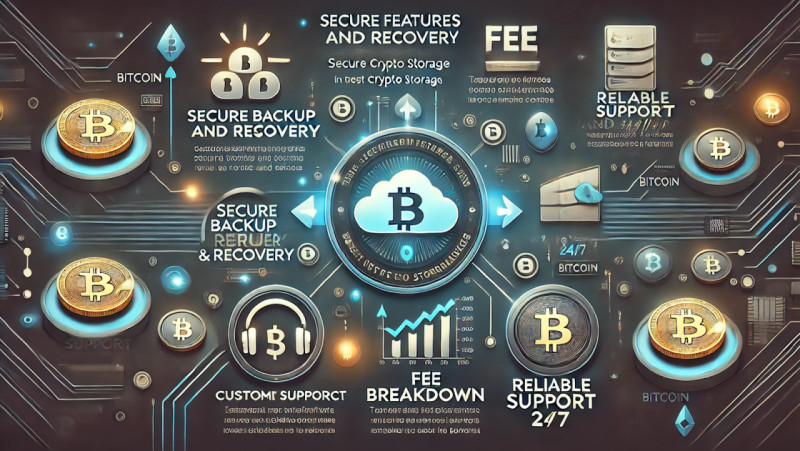
4. Backup and Recovery
Losing access due to technical failure or human error can result in irreversible losses. Effective tools provide recovery methods to restore access seamlessly.
Key recovery elements:
- Recovery phrases: trusted tools generate a 12–24-word recovery phrase during setup. This sequence acts as a failsafe, enabling fund restoration on another device if access is lost.
- Backup prompts: solutions that remind users to save key backups reduce risks tied to data loss. Storing phrases or transaction records on physical devices or durable materials ensures long-term accessibility.
- Quick restoration: straightforward recovery systems minimize downtime, restoring access without unnecessary complications.
Prioritizing these elements ensures holdings remain recoverable even during unexpected events.
5. Fees
Transaction costs as well as associated charges influence the overall user experience. Knowing fee structures allows for cost-effective decisions.
Fee types to consider:
- Transaction adjustments: best bitcoin wallet offers customizable fees allowing users to prioritize transfers based on speed or affordability. High-priority transactions may incur slightly higher fees during peak activity.
- Service costs: software-based tools often remain free, while hardware devices or custodial services may require purchase fees or subscriptions.
- Hidden expenses: always review terms carefully to identify potential costs, including withdrawal fees or deposit charges.
Balancing fees against features ensures users achieve optimal value without compromising performance.
6. Reliable Support
Efficient customer assistance becomes invaluable during unexpected issues. Whether troubleshooting software errors or navigating unfamiliar tools, support ensures a smooth experience.
Why support is essential:
- Problem resolution: fast responses for glitches, transaction failures, or recovery issues prevent unnecessary disruptions.
- Educational tools: resources like tutorials, FAQs, guides empower users to resolve common problems independently.
- Accessible assistance: multiple support channels, including live chat, email, phone, ensure help remains available when needed.
Reliable support teams simplify the user experience, providing confidence to both beginners and advanced users.
Final Considerations
The best crypto storage aligns with specific needs, balancing safety, usability, recovery options. Regular users may prioritize simplicity as well as accessibility, while long-term investors often focus on offline protection. By choosing a tool with strong encryption, recovery methods, responsive support, users safeguard their holdings effectively while maintaining control over funds.
Top Wallets for Cryptocurrency in 2024
Choosing a reliable storage solution ensures effective protection as well as management of digital holdings. Options range from advanced hardware tools to versatile mobile applications along with paper-based methods. Below are top solutions for securely storing as well as accessing assets in 2024.

Top Hardware Wallets
Hardware devices stand out as some of the safest tools available. Operating offline, they significantly reduce exposure to cyber threats like hacking or phishing.
1. Ledger Nano X. This device combines strong protection with intuitive functionality, making it a popular choice for users of all levels.
Key Features:
- Supports over 1,500 digital assets.
- Bluetooth-enabled for wireless connectivity.
- Secure Element (SE) chip prevents tampering.
- Sleek, compact design for portability.
| Pros | Cons |
| Simple to configure and operate | Pricier than other options |
| Integrates seamlessly with mobile as well as desktop platforms | Bluetooth capability may concern those prioritizing absolute offline storage |
| High-level encryption safeguards private keys |
2. Trezor Model T. This device appeals to experienced users who value transparency along with customization.
Key Features:
- Touchscreen interface enhances usability.
- Open-source firmware ensures trustworthiness.
- Broad compatibility with various digital assets.
| Pros | Cons |
| Fully customizable with advanced settings | Slightly higher cost compared to competitors |
| Strong PIN protection and passphrase support | Lacks Bluetooth connectivity |
| Reliable recovery tools prevent data loss |
3. Coldcard. Coldcard focuses on extreme offline safety, making it ideal for privacy-conscious users.
Key Features:
- Fully air-gapped design eliminates online exposure.
- MicroSD card backups store private keys securely.
- PIN access with a self-destruct feature for failed attempts.
| Pros | Cons |
| One of the most secure offline storage options | Complex setup makes it less beginner-friendly |
| Perfect for advanced users handling multi-signature transactions | Interface can feel overwhelming initially |
| Designed with maximum privacy in mind |
Best Software Wallets
Software-based solutions offer flexibility as well as accessibility, making them the best bitcoin wallet for regular management along with transactions.
1. Exodus. Exodus offers a polished, beginner-friendly platform with an appealing interface.
Key Features:
- Supports various digital assets.
- Built-in exchange streamlines asset swaps.
- Accessible on desktop and mobile devices.
| Pros | Cons |
| Excellent choice for newcomers with its clean design | Lacks advanced tools for experienced users |
| Instant asset exchange without third-party tools | Online nature reduces overall safety compared to offline methods |
2. Electrum. Electrum remains a trusted option for advanced users seeking fast, reliable performance.
Key Features:
- Low resource usage ensures quick transaction processing.
- Supports multi-signature and hardware integrations.
- Customizable transaction fees for network optimization.
| Pros | Cons |
| Known for speed and reliability | Outdated design may deter beginners |
| Tailored to experienced individuals | Limited compatibility with non-Bitcoin assets |
3. Mycelium. Mycelium caters to mobile users, offering advanced features with flexible access.
Key Features:
- Cold storage compatibility enhances safety.
- Advanced transaction options for tech-savvy individuals.
- Real-time updates on balances and activity.
| Pros | Cons |
| Perfect for managing funds on the move | Interface might overwhelm less experienced users |
| Supports hardware integrations for added defense |
Leading Mobile Wallets
Mobile-based tools deliver unmatched convenience, offering quick access from virtually anywhere.
1. Trust Wallet supports multiple digital assets along with decentralized applications (DApps).
Key Features:
- Multi-asset compatibility with seamless navigation.
- Full control over private keys.
| Pros | Cons |
| Simplifies management for diverse holdings | Online presence makes it less resistant to cyber threats |
| Quick setup without technical complications |
2. BRD (Bread Wallet). BRD provides an easy-to-use option focused on simplicity as well as privacy.
Key Features:
- Accessible for both Android and iOS users.
- Designed with privacy as a core principle.
| Pros | Cons |
| Excellent for beginners with intuitive controls | Fewer features compared to advanced tools |
| No personal data collection enhances anonymity |
Best Paper Wallet Generators
Paper-based methods offer a straightforward, cost-effective way to store private and public keys. Though free, they require careful management.
1. BitAddress.org. BitAddress.org enables offline generation of paper-based keys, eliminating digital risks.
| Pros | Cons |
| Completely free tool | Vulnerable to physical damage like fire or water |
| Fully offline key generation ensures safety |
2. WalletGenerator.net. WalletGenerator.net simplifies paper key creation through step-by-step guidance.
| Pros | Cons |
| Beginner-friendly with clear instructions | Printing process requires careful security measures |
| Supports multiple digital currencies |
Final Thoughts
The best crypto storage aligns with personal needs, experience level, priorities. Hardware tools dominate offline protection, while software as well as mobile platforms excel in accessibility. Paper-based methods offer cost-effective alternatives but require vigilance against physical damage. Carefully assess your preferences along with requirements to ensure effective management as well as safeguarding of digital assets.
Which Bitcoin Wallet to Choose: A Decision-Making Guide
Selecting the most effective storage solution depends on your needs, experience level, habits. Whether you are new to managing digital funds, a frequent user, or a long-term holder, choosing wisely guarantees smooth access while keeping holdings safe. This guide outlines key options, helping you determine the best bitcoin wallet for your situation.

For Beginners
New users need tools that emphasize simplicity while including essential protections.
- Guided setup: solutions like Exodus or Trust Wallet simplify onboarding with step-by-step instructions. These tools guide users through creating accounts, managing keys, making their first transactions without confusion.
- Clear design: platforms with clean dashboards along with easy navigation streamline tasks like viewing balances or sending funds. Wallets such as Coinbase Wallet stand out with their user-friendly layouts designed specifically for newcomers.
- Reliable support: beginners benefit from platforms with strong customer assistance. Look for options that offer live chat, FAQs, or responsive email support. Community forums as well as tutorials also help troubleshoot common issues along with preventing costly errors.
Solutions built for accessibility allow beginners to manage holdings confidently while learning essential skills.
For Advanced Users
Experienced individuals often seek solutions that offer greater flexibility, customization, enhanced protection.
- Multi-signature support: platforms like Electrum or Coldcard enable multi-key authorizations, reducing risks of unauthorized access during transactions.
- Adjustable fees: tools allowing fee customization give advanced users control over costs along with speed during network congestion, optimizing transaction efficiency.
- Privacy features: wallets offering address rotation, coin mixing, or limited verification (no KYC) help maintain anonymity for privacy-focused users.
- Hardware integration: advanced users often pair software solutions, like Electrum, with hardware tools such as Ledger Nano X, combining convenience with offline safety.
Tools tailored to advanced needs offer refined control, empowering experienced users to manage funds with precision.
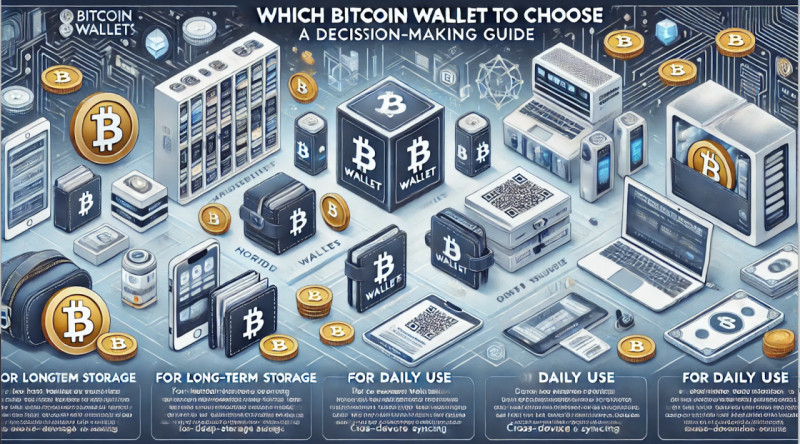
For Long-Term Storage
Individuals planning to hold assets for years require durable, offline storage that minimizes exposure to digital threats.
- Hardware options: devices like Ledger Nano X or Trezor Model T remain offline, shielding private keys from hacking attempts. These physical tools ensure holdings remain untouched for extended periods.
- Paper-based methods: platforms like BitAddress.org generate physical copies of private keys, offering a low-cost, low-tech solution. To prevent damage, these keys must be stored in waterproof, fireproof containers.
- Deep storage vaults: institutional investors or individuals with substantial assets often use deep cold storage facilities, such as bank vaults. Combining this with multi-signature setups adds an extra level of defense.
For long-term strategies, offline methods significantly reduce risks, providing unmatched protection for large reserves.
For Daily Use
Users who transfer funds frequently need tools emphasizing speed, accessibility, ease of use.
- Mobile solutions: applications like Trust Wallet or Mycelium enable on-the-go management. These tools support quick transfers, QR code scanning, instant notifications, making them ideal for day-to-day spending.
- Online platforms: tools such as Blockchain.com Wallet offer easy access from any internet-connected device. While online solutions carry slightly higher risks, they balance convenience with essential features.
- Cross-device syncing: platforms that sync seamlessly across mobile, desktop, browser interfaces ensure users can manage funds consistently from multiple devices.
Daily use solutions focus on speed as well as simplicity, allowing funds to move effortlessly without delays or friction.
For Privacy-Focused Users
Individuals valuing anonymity require tools equipped with advanced privacy features while choosing the best bitcoin wallet.
- Non-KYC options: platforms like Samourai Wallet avoid requiring identity verification, ensuring user data remains unlinked to their funds.
- Address rotation: tools generating new receiving addresses for each transfer make tracking activity more difficult, enhancing privacy along with reducing risk.
- Transaction obfuscation: wallets like Wasabi offer coin-mixing capabilities, which obscure transaction histories, preventing monitoring or tracking of funds.
Privacy-focused tools deliver the discretion necessary for managing holdings without compromising data protection.
Making the Right Choice
Choosing an effective solution starts with identifying your priorities. Beginners benefit most from intuitive tools that simplify processes, while advanced users prefer solutions with extensive customization as well as enhanced safety. Long-term holders rely on offline methods, ensuring assets remain untouched by cyber threats. Daily users, on the other hand, favor mobile as well as online platforms for efficiency and quick transfers.
Knowing your goals helps align your needs with a cryptocurrency wallet. Whether focused on simplicity, advanced functionality, or privacy, the right tool ensures funds remain safe, accessible, perfectly suited to your lifestyle.
How to Set Up Your Bitcoin Wallet Step by Step
Setting up a storage solution to safeguard digital assets is simple when approached systematically. Whether preparing for long-term holdings or frequent use, precision during setup ensures smooth access along with protection. This step-by-step guide outlines everything needed to configure a reliable tool tailored to your needs. Follow these instructions to confidently begin using your crypto storage for managing funds.
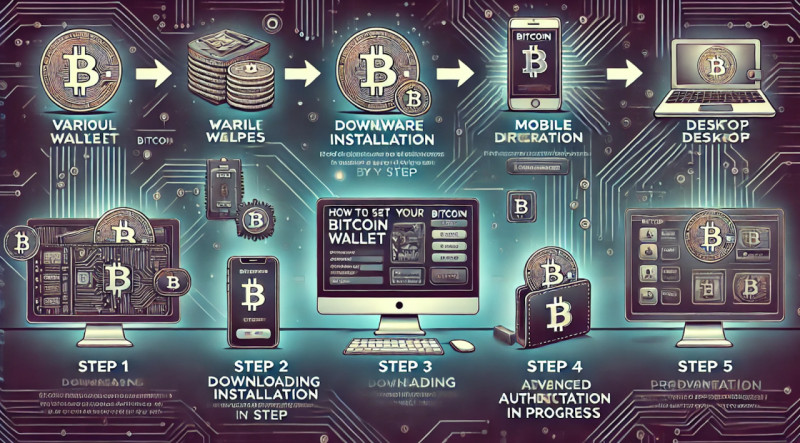
Step 1: Select the Right Wallet Type
Choosing the appropriate storage type depends on personal goals, activity level, asset size.
- Hardware devices: suitable for securing substantial holdings over time. Products like Ledger Nano X or Trezor Model T remain offline, isolating access keys from online threats.
- Mobile applications: best for regular transactions requiring quick access. Tools such as Trust Wallet or Mycelium offer portability, making them ideal for users on the move.
- Desktop solutions: perfect for those valuing control with balanced accessibility. Platforms like Electrum function offline while providing advanced customization.
- Paper options: low-tech, offline methods involve printing private and public keys. Ideal for long-term, cost-effective protection if keys are stored safely.
Evaluate priorities — whether focused on convenience, offline defense, or advanced features — and select the tool that aligns with your requirements.
Step 2: Download, Install, or Purchase Your Chosen Solution
After selecting a preferred option, secure access to it:
- Hardware devices: purchase directly from trusted manufacturers, such as Ledger or Trezor, to avoid counterfeit risks. Avoid second-hand purchases. Follow provided instructions to connect the device with your computer or smartphone.
- Mobile or desktop platforms: download software from official websites or verified app stores. Always verify the developer’s authenticity to prevent exposure to malicious programs. Choose tools with frequent updates as well as positive reviews.
- Paper-based options: use a disconnected computer to generate keys via trusted sources like BitAddress.org. Print keys on durable material, store them in protected locations.
Double-check authenticity before downloading or buying. Rushing this step increases exposure to security risks.
Step 3: Follow the Setup Instructions
Each method involves slightly different steps, but the general process of creating the best bitcoin wallet includes:
- Generate recovery information: record the recovery phrase (12–24 words) generated during setup. This sequence restores access if devices malfunction or are lost. Store copies offline in secure, redundant locations.
- Create strong passwords: use complex, unique combinations of uppercase, lowercase letters, numbers, special characters. Avoid obvious choices like names or dates.
- Test connectivity: hardware devices must sync correctly with associated management software. Mobile or desktop platforms should function smoothly during testing.
Ensure recovery details are accurate. Secure backups across multiple trusted locations.
Step 4: Perform a Test Transfer with a Small Amount
Before transferring significant amounts, verify functionality with a test transaction:
- Copy your receiving address from the chosen interface.
- Send a small sum from an exchange or another platform to the new tool.
- Track the transaction through a blockchain explorer, confirming it reaches the intended address successfully.
- Verify the updated balance on your tool.
Testing with minimal amounts confirms everything works without risking large holdings.
Step 5: Enable Advanced Protection Features
Strengthen defenses against unauthorized access by activating additional layers of protection:
- Two-factor authentication (2FA): platforms supporting 2FA can integrate apps like Google Authenticator. This step adds a secondary verification layer during logins or transfers.
- PIN codes: use PINs to restrict access to devices or interfaces. Many tools erase stored data automatically after multiple failed attempts, reducing risks from tampering.
- Biometric options: enable fingerprint or facial recognition for platforms offering these features. Quick yet secure, they combine convenience with strong protection.
Regularly review protection settings to ensure defenses remain updated against emerging threats.
Final Thoughts
Properly configuring a tool for managing digital assets establishes a reliable foundation for storage as well as transactions. Each step — from selecting an appropriate solution along with testing its functionality to enabling advanced defenses — plays a vital role in safeguarding holdings. Whether securing substantial reserves for years or managing daily transfers, following this process minimizes risk while maximizing usability.
The best crypto wallet delivers more than storage; it simplifies management as well as ensures funds remain protected. By investing time into setup, you can confidently focus on growth as well as financial goals without constant worries about vulnerabilities.
Common Mistakes to Avoid When Choosing a Bitcoin Wallet
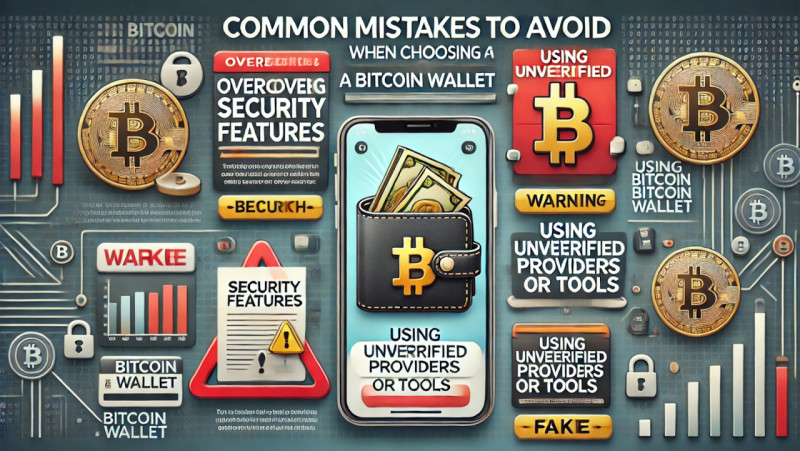
Selecting a reliable solution for managing digital assets may seem straightforward, yet minor errors can cause serious consequences. Overlooking security, relying on unverified platforms, or prioritizing convenience too heavily can jeopardize funds. Knowing and avoiding these pitfalls helps maximize protection as well as efficiency. Here are the key mistakes to sidestep when searching for the safest cryptocurrency storage suited to your needs.
1. Overlooking Security Features
Neglecting available safeguards creates unnecessary vulnerabilities. Security tools are critical in ensuring access remains protected while preventing loss.
- Backup phrases: recovery phrase (12–24 words) restores access when devices fail or disappear. Failing to document or store this sequence risks permanent loss. Record it on durable materials, like metal plates, place backups in separate, secure locations.
- Two-factor authentication (2FA): this feature adds a second verification layer to the best bitcoin wallet, like a mobile-generated code, significantly reducing unauthorized entry risks. Skipping 2FA exposes accounts, especially when weak passwords are involved.
- PIN codes, biometrics: activate PINs or biometric locks on mobile tools along with hardware devices. Without these, anyone gaining access to your device could compromise funds.
Leverage every security option available. Ignoring these features undermines even the most protective solutions.
2. Using Unverified Providers or Tools
Trusting unverified solutions often leads to loss. Counterfeit platforms, phishing attacks, malware-filled downloads thrive on user carelessness.
- Download from verified sources: always acquire tools through official websites, manufacturer portals, or trusted app stores. Avoid third-party links from emails, forums, or unknown websites.
- Research providers: investigate platforms before committing. Look for credible reviews, community feedback, a transparent track record. Tools with minimal information or questionable ratings are best avoided.
- Avoid suspicious third-party apps: extensions, software, or tools promising free features often introduce malicious software into devices.
Choosing reputable providers reduces the chance of encountering vulnerabilities or scams.
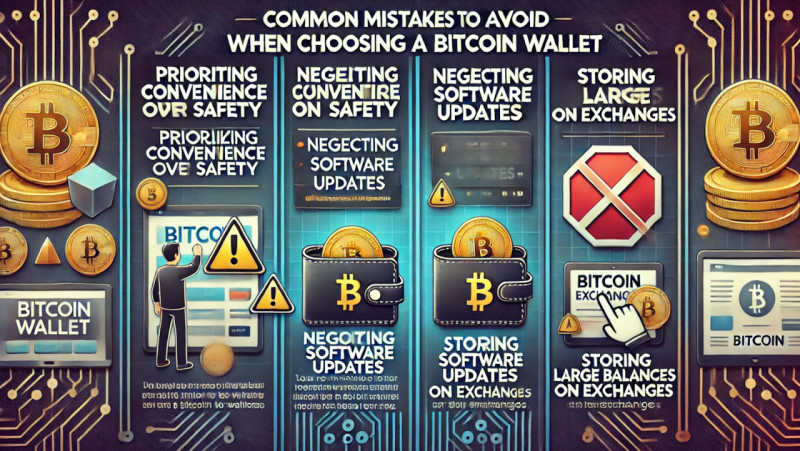
3. Prioritizing Convenience Over Safety
Easy-to-use platforms appeal to beginners but often compromise long-term protection. Prioritize defense when managing significant holdings.
- Avoid internet-based solutions for large holdings: online platforms are excellent for frequent transfers but unsuitable for substantial sums. Offline alternatives, such as hardware devices or paper-based methods, offer superior protection.
- Distribute funds: separate assets into multiple solutions. Keep smaller amounts in accessible tools for regular activities, while securing larger reserves offline.
- Move holdings off exchanges: leaving funds on trading platforms exposes them to cyberattacks, technical failures, or platform insolvency. Exchanges function primarily as trading hubs, not long-term storage solutions.
Balance convenience with adequate safeguards to ensure funds remain protected.
4. Neglecting Software Updates
Outdated tools expose users to known vulnerabilities. Developers frequently release updates to address flaws, improve compatibility, strengthen security.
- Enable notifications: activate alerts to receive reminders about new updates.
- Regular manual checks: periodically verify that the software version or firmware in use remains current.
- Update hardware devices: firmware upgrades improve functionality while addressing emerging threats, ensuring tools remain reliable over time.
Ignoring updates increases the risk of encountering performance issues or security breaches. Stay proactive to reduce exposure.
5. Storing Large Balances on Exchanges
Trading platforms exist to facilitate purchases as well as trades — not long-term storage. Keeping significant holdings on exchanges exposes assets to unnecessary dangers.
- Hacking threats: platforms frequently face cyberattacks, targeting their large reserves. Breaches often leave user funds irretrievable.
- Operational failures: exchanges may freeze or restrict accounts due to technical errors, regulatory action, or financial collapse.
- Loss of control: users relying on exchanges lack ownership of access keys, placing complete trust in the platform’s integrity.
Transfer assets into a personal storage solution. Retaining ownership of private keys ensures control while reducing reliance on third parties.
Conclusion
Selecting the right tool to manage digital holdings requires awareness of common errors. Avoid neglecting protective features, trust only reputable providers, prioritize offline methods when storing significant sums. Keeping tools updated along with distributing funds wisely further enhances reliability. By steering clear of these mistakes, you can confidently identify the best bitcoin wallet, safeguarding assets while maintaining full control over your financial future.
Tips for Securing Your Bitcoin Wallet
Protecting digital assets requires careful planning along with constant vigilance. A few thoughtful precautions can make the difference between maintaining control of your holdings as well as suffering unnecessary losses. Adopting strong security measures ensures funds remain safe from cyber threats along with external risks. Follow this guide to enhance the safety of your storage solution effectively.
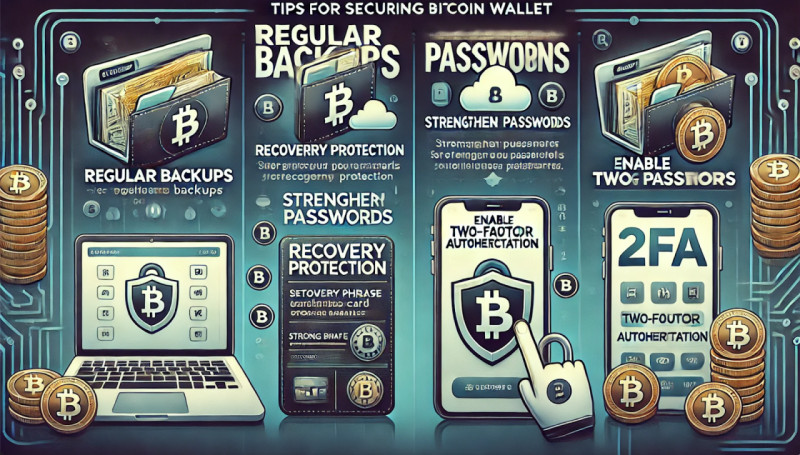
1. Regular Backups, Recovery Protection
Backups serve as a failsafe in case devices become compromised, damaged, or misplaced. Regardless of whether you use hardware tools, software applications, or mobile-based solutions, protecting recovery data remains crucial.
- Secure recovery phrases: write down the recovery phrase—12 to 24 words—on physical materials like paper or metal. Avoid storing these details digitally, as cloud services or devices can be vulnerable to hacking.
- Multiple copies: safeguard duplicate copies in separate, secure locations. For example, place one in a fireproof safe at home and another in a safety deposit box or offsite vault.
- Test restorations: periodically simulate the recovery process to confirm the accuracy as well as functionality of your backup information.
Prioritizing strong backups ensures you retain access to your holdings even during unexpected failures or loss.
2. Strengthen Passwords, Enable Two-Factor Authentication
Passwords act as the primary barrier preventing unauthorized access. Weak credentials create an easy opening for malicious actors, so it’s critical to fortify this defense with advanced tools.
- Complex passphrases: combine uppercase along with lowercase letters, numbers, symbols. Avoid predictable information such as names, birthdays, or generic phrases. Password managers can generate as well as securely store these combinations.
- Two-factor authentication (2FA): activate 2FA wherever available. This requires a second verification method—such as an authenticator app, SMS code, or biometric scan—making it far more difficult for intruders to succeed.
- Unique credentials: never reuse passwords across platforms. If one account becomes compromised, recycled credentials can endanger other tools or services.
By combining unique, strong passphrases with multi-layered verification, access points remain significantly more secure.
3. Avoid Public Networks, Untrusted Connections
Public internet networks present vulnerabilities that cybercriminals can exploit to intercept sensitive information. Ensuring connections remain private as well as trusted limits exposure to risks.
- Use a VPN: if connecting through public Wi-Fi becomes unavoidable, employ a Virtual Private Network (VPN) to encrypt traffic, shielding sensitive data from prying eyes.
- Stick to trusted networks: access accounts or tools only through secure, password-protected networks like home or office connections.
- Avoid shared devices: refrain from logging in on shared computers or public devices, as malware or spyware could track keystrokes or steal data.
Minimizing reliance on untrusted networks reduces exposure to cyber threats along with unauthorized intrusions.
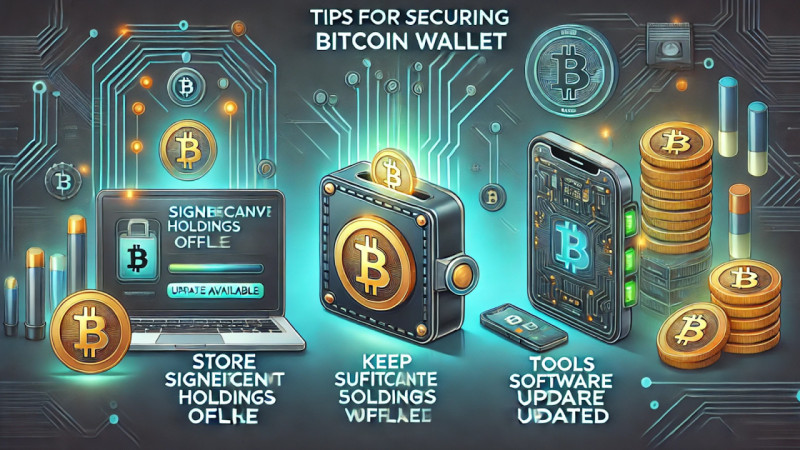
4. Store Significant Holdings Offline
Larger sums require additional safeguards. While online tools offer speed as well as accessibility, offline methods provide unmatched protection against cyberattacks.
- Physical storage options: hardware solutions like Ledger or Trezor remain disconnected from the internet, shielding private keys from remote threats.
- Cold storage alternatives: generate paper-based solutions or use air-gapped computers to keep credentials entirely offline.
- Divide holdings: split assets across offline and online tools. Keep smaller portions in easily accessible platforms for frequent use while securing larger amounts offline.
For substantial investments, offline solutions can be the best bitcoin wallet delivering long-term safety through reduced exposure.
5. Keep Tools, Software Updated
Outdated tools often contain weaknesses that attackers exploit. Regular updates address bugs, enhance performance, strengthen protection against evolving threats.
- Enable automatic updates: activate automatic updates to ensure software remains current without manual intervention.
- Firmware for hardware devices: regularly check manufacturers’ websites for firmware updates. Installing the latest patches helps hardware tools remain compatible as well as resistant to vulnerabilities.
- Stick with reputable providers: use solutions from trusted developers with positive user reviews along with established track records. Avoid unverified software that might harbor malware or other risks.
Updating tools consistently ensures maximum functionality while reducing the risk of exploitation.
Conclusion
Safeguarding digital holdings requires deliberate strategies along with consistent action. Backups, strong credentials, trusted connections, offline solutions collectively create a reliable defense system. Regular software updates ensure tools remain resilient against evolving risks.
Whether managing small sums or large investments, adopting these measures protects your holdings while maintaining control. By taking these steps seriously, you not only avoid common pitfalls but also create a foundation for secure, efficient asset management. Thoughtful execution ensures the top crypto wallet suits your needs while providing peace of mind that funds remain both safe as well as accessible.
Frequently Asked Questions About Bitcoin Wallets
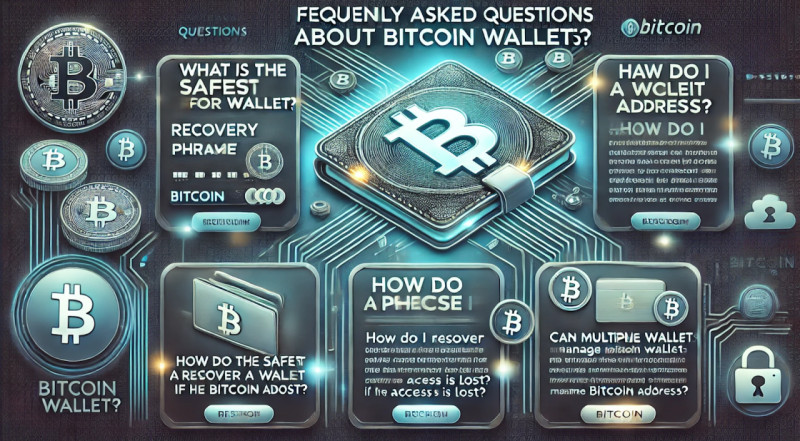
What is the safest wallet for Bitcoin?
The most secure storage methods rely on offline options like hardware devices or cold storage systems. Tools such as Ledger Nano X, Trezor Model T, Coldcard stand out as trusted solutions for safeguarding private keys. These physical devices keep credentials offline, reducing exposure to hacking, phishing, or malware.
Why hardware solutions offer greater protection:
- Private keys remain stored within the physical device, connecting online only when transactions occur. This drastically limits digital risks.
- Hardware solutions include encrypted chips along with PIN verification, making unauthorized access nearly impossible.
Additional secure methods:
- Air-gapped computers: devices fully disconnected from internet connections.
- Paper storage: physical documents containing printed keys. Though secure, they require careful management to prevent damage or loss.
For long-term holding or managing significant sums, hardware devices remain unmatched. Choosing the finest crypto storage balances high-level security with usability.
How do I recover a wallet if access is lost?
Access restoration depends on backups created during initial setup.
Recovery phrase: most tools provide a recovery phrase — a sequence of 12 to 24 words — during configuration. If a device is lost, damaged, or stolen, this phrase allows funds to be restored on another platform. Without it, access recovery becomes impossible.
Steps to regain access:
- Locate backup: retrieve the recovery phrase or recovery file.
- Choose compatible software: use tools supporting the original recovery method.
- Follow setup instructions: input the recovery phrase precisely to restore access.
- Platform-specific help: or exchanges or custodial platforms, contact support. Verification of ownership or identification might be required.
Tip: regularly test recovery phrases in a secure environment to confirm they function correctly.
Can multiple wallets manage the same Bitcoin address?
While tools cannot control the same address simultaneously, importing private keys or recovery phrases allows funds to appear across different platforms. This creates a mirrored copy of the original address of the best bitcoin wallet.
When mirroring makes sense:
- Managing funds across mobile and desktop for convenience.
- Adding redundancy by using multiple tools in case one becomes unavailable.
Caution with private keys: sharing private keys between platforms increases risks. If one tool is compromised, all linked solutions become vulnerable. Advanced users often divide holdings across separate addresses instead of mirroring a single one.
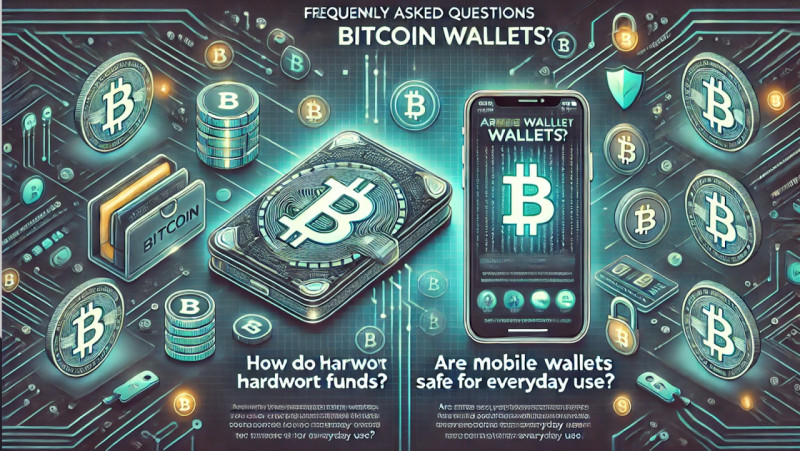
How do hardware wallets protect funds?
Hardware tools provide isolation for private keys, ensuring protection from online risks.
Core safeguards:
- Offline storage: keys remain disconnected, immune to internet-based attacks.
- Encryption: data stored within devices is encrypted, deterring unauthorized access.
- PIN verification: users confirm transactions by entering a PIN, blocking unauthorized usage.
- Recovery mechanism: recovery phrases enable funds to be restored without compromising security.
Transactions occur within the hardware device itself, ensuring private keys never interact directly with online systems. This design makes hardware tools virtually impenetrable when used correctly.
Are mobile wallets safe for everyday use?
Mobile tools offer convenience but carry risks, particularly when constantly connected to the internet.
Advantages for daily transfers:
- Fast, user-friendly access.
- Seamless integration with payment systems or QR code transactions.
- Ideal for beginners managing small amounts.
Risks, limitations:
- Vulnerable to malware or phone theft.
- Exposed to phishing attacks on untrusted networks.
Tips for safer use:
- Activate two-factor authentication, PIN protection.
- Keep apps updated to close vulnerabilities.
- Avoid storing large sums on mobile tools.
Mobile tools suit frequent transfers along with everyday transactions. Pairing them with offline solutions for larger amounts provides a balanced approach to managing funds.
Comprehending the strengths of different tools allows informed decisions. Whether hardware devices, mobile apps, or paper-based solutions, good habits significantly reduce risks. The top crypto storage combines robust protection, adaptability, ease of use, ensuring funds remain safe while meeting individual needs.
Conclusion: Finding the Best Crypto Storage for Your Needs
Selecting an appropriate storage method for digital assets plays a vital role in protecting long-term investments as well as ensuring seamless management. The right tool balances robust protection, practical usability, flexibility, aligning with your individual goals. Whether a beginner or an advanced user, knowing specific requirements will guide your decision effectively.
Tailor Solutions to Individual Needs
Each storage option serves distinct purposes, catering to different users as well as scenarios. Identifying your priorities simplifies the decision-making process.
- For beginners:
Start with intuitive tools designed with simplicity in mind. Mobile apps or software solutions with step-by-step onboarding processes offer an excellent starting point. Features like clear navigation, accessible support resources, straightforward recovery processes help newcomers build confidence while managing assets.
- For advanced users:
Those seeking greater control should prioritize tools with customizable settings. Features like multi-signature approval, privacy enhancements, or compatibility with decentralized applications deliver deeper functionality. These solutions empower experienced individuals to manage complex strategies as well as optimize asset management.
- For long-term storage:
Hardware devices or air-gapped systems excel at securing substantial holdings over extended periods. By keeping private keys offline, these options virtually eliminate exposure to cyber threats. Pairing such methods with securely stored recovery phrases adds an extra layer of resilience.
- For daily transactions:
Mobile and desktop platforms work as the best bitcoin wallet for frequent transfers or spending needs. Tools equipped with PIN protection, two-factor authentication, quick interface access ensure both efficiency as well as basic protection during regular use.
- For privacy-focused users:
Opt for solutions that prioritize anonymity by avoiding personal data collection or extensive verification processes. Open-source platforms offer transparency, control, trust, making them ideal for those prioritizing discretion.
Safety as a Foundation for Asset Protection
Regardless of the chosen method, prioritizing safety remains non-negotiable. A proactive approach to safeguarding assets minimizes risks while preserving accessibility.
- Backup recovery information: safeguard recovery phrases by storing them in secure, fire-resistant locations, such as safes or trusted safety deposit boxes. Ensure duplicates exist in case of unforeseen circumstances.
- Keep software updated: outdated tools contain vulnerabilities that hackers exploit. Regular updates patch flaws, boost performance, enhance protection.
- Avoid public networks: public Wi-Fi networks expose sensitive information. Access funds only through private, password-protected connections to minimize interception risks.
- Use layered protection: implement robust passwords, PIN codes, two-factor authentication to block unauthorized access effectively.
Incorporating these precautions ensures that assets remain protected under all circumstances while reducing the risk of irretrievable losses.
Future-Proof Your Strategy
The digital asset landscape evolves continuously, introducing new tools along with upgrades. Periodic reviews of your current setup allow you to adapt as well as maintain an optimal balance between usability, protection.
- Diversify storage: for substantial holdings, splitting assets across multiple methods mitigates risks. Combine offline devices for long-term security with online platforms suited for everyday management. This redundancy strengthens asset protection as well as reduces vulnerability from potential failures.
- Explore innovations: monitor emerging solutions or technologies offering advanced features. Upgrades often improve safety, streamline usability, enhance overall performance.
Staying adaptable, proactive, informed ensures your strategy keeps pace with advancements while aligning with individual priorities. Whether your focus is on safeguarding significant holdings or enabling quick transactions, choosing the best bitcoin wallet creates a solid foundation for managing digital assets efficiently as well as securely.
Recommended
“How to create a bitcoin wallet”
“How to top up bitcoin wallet”





